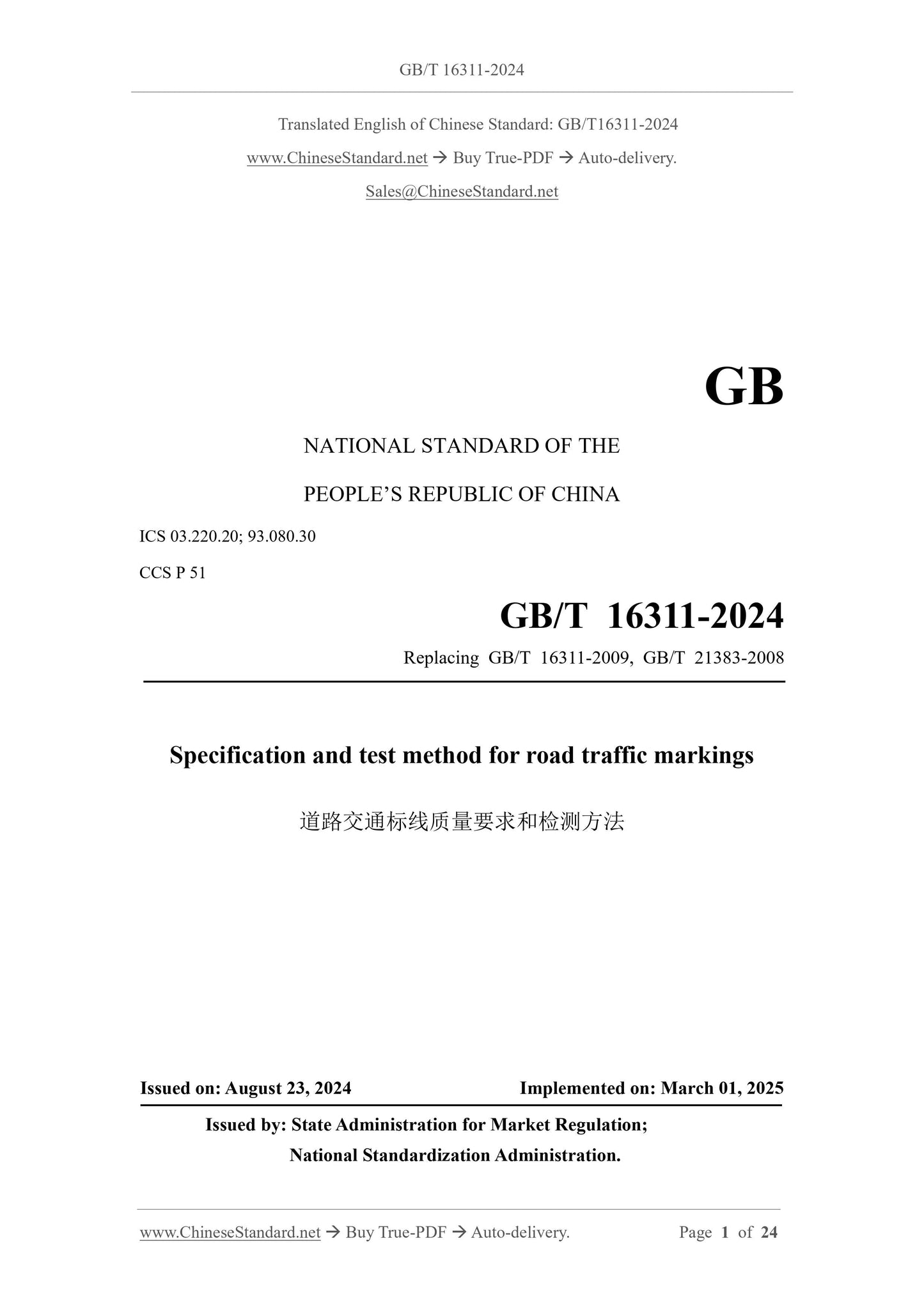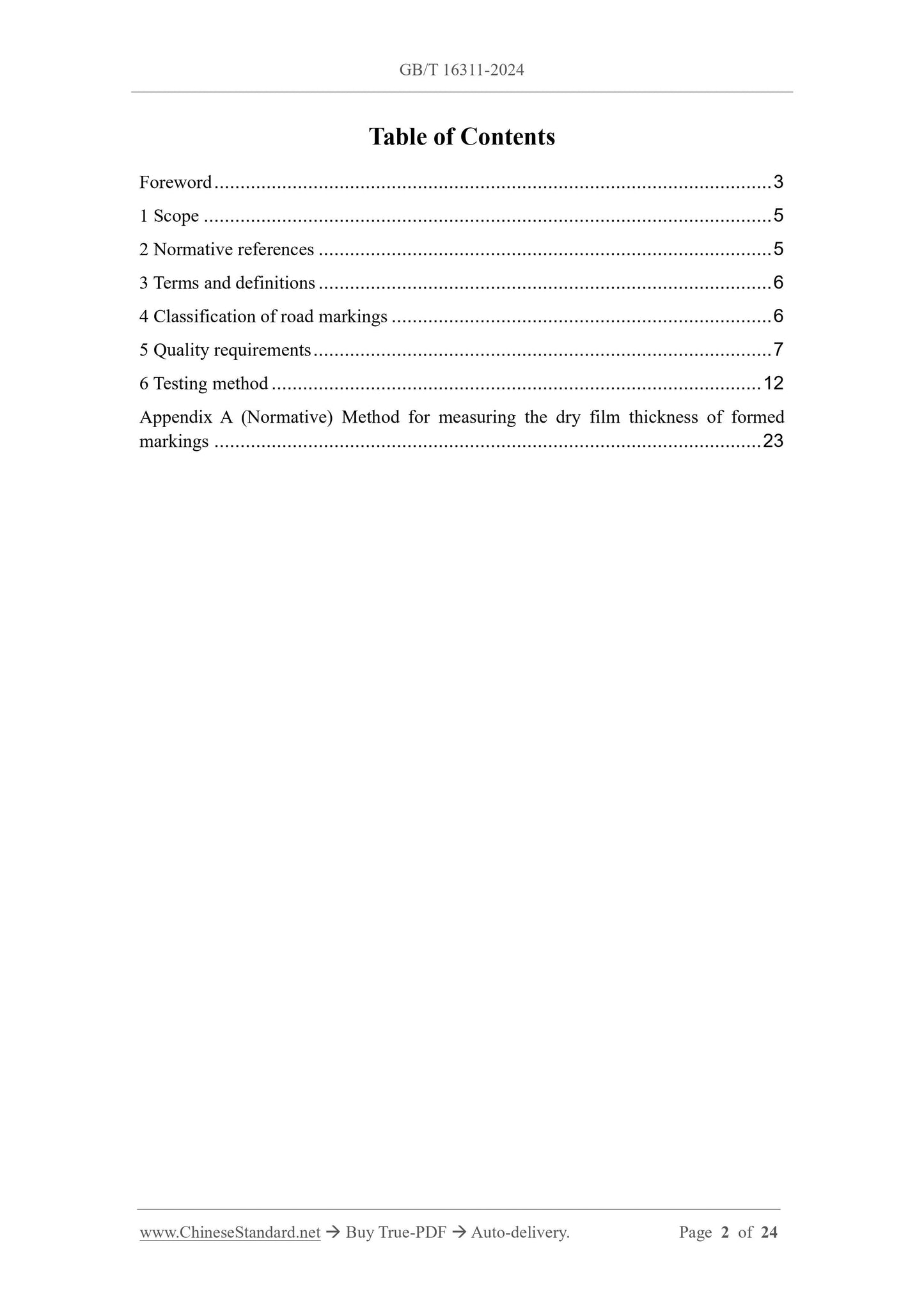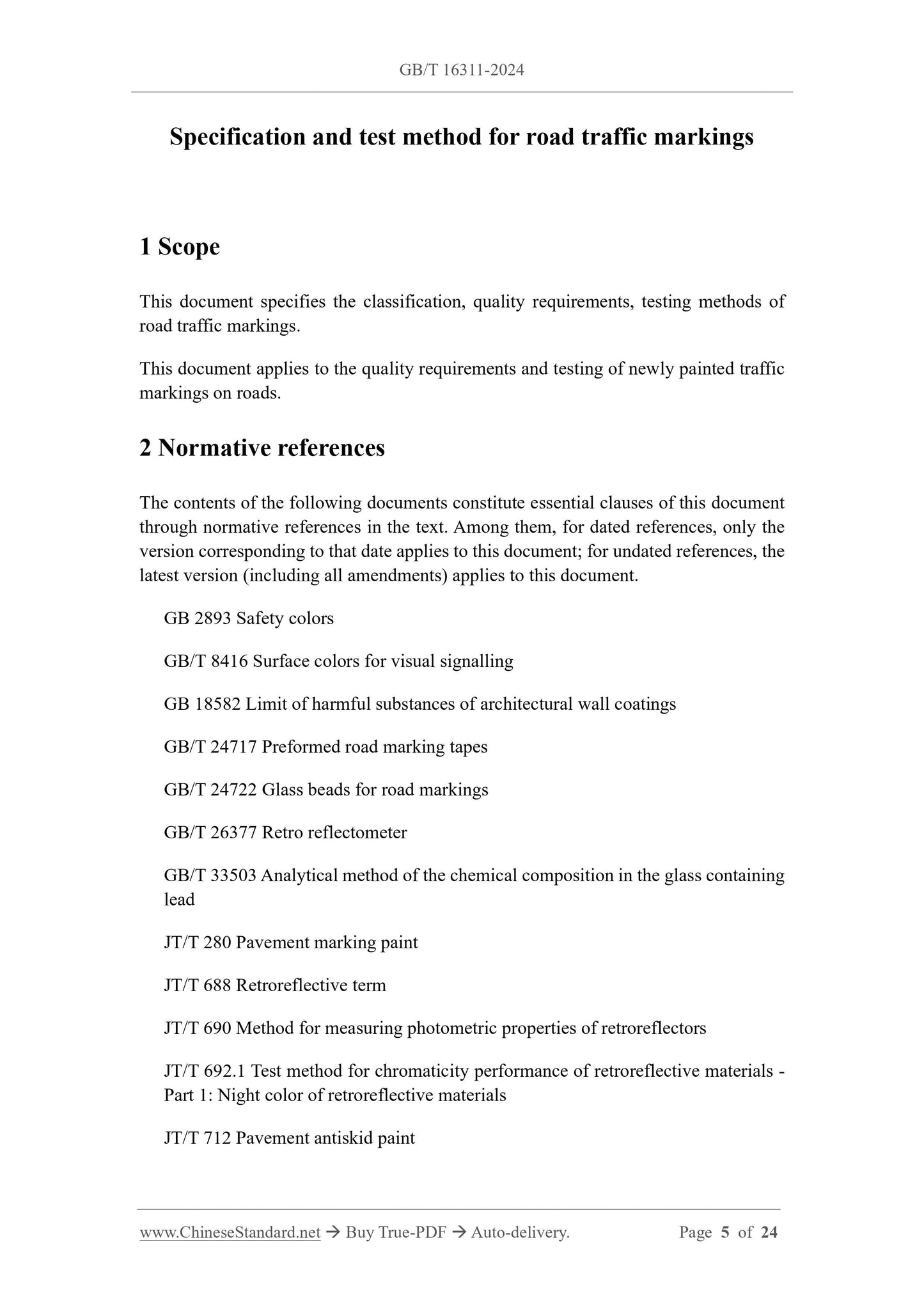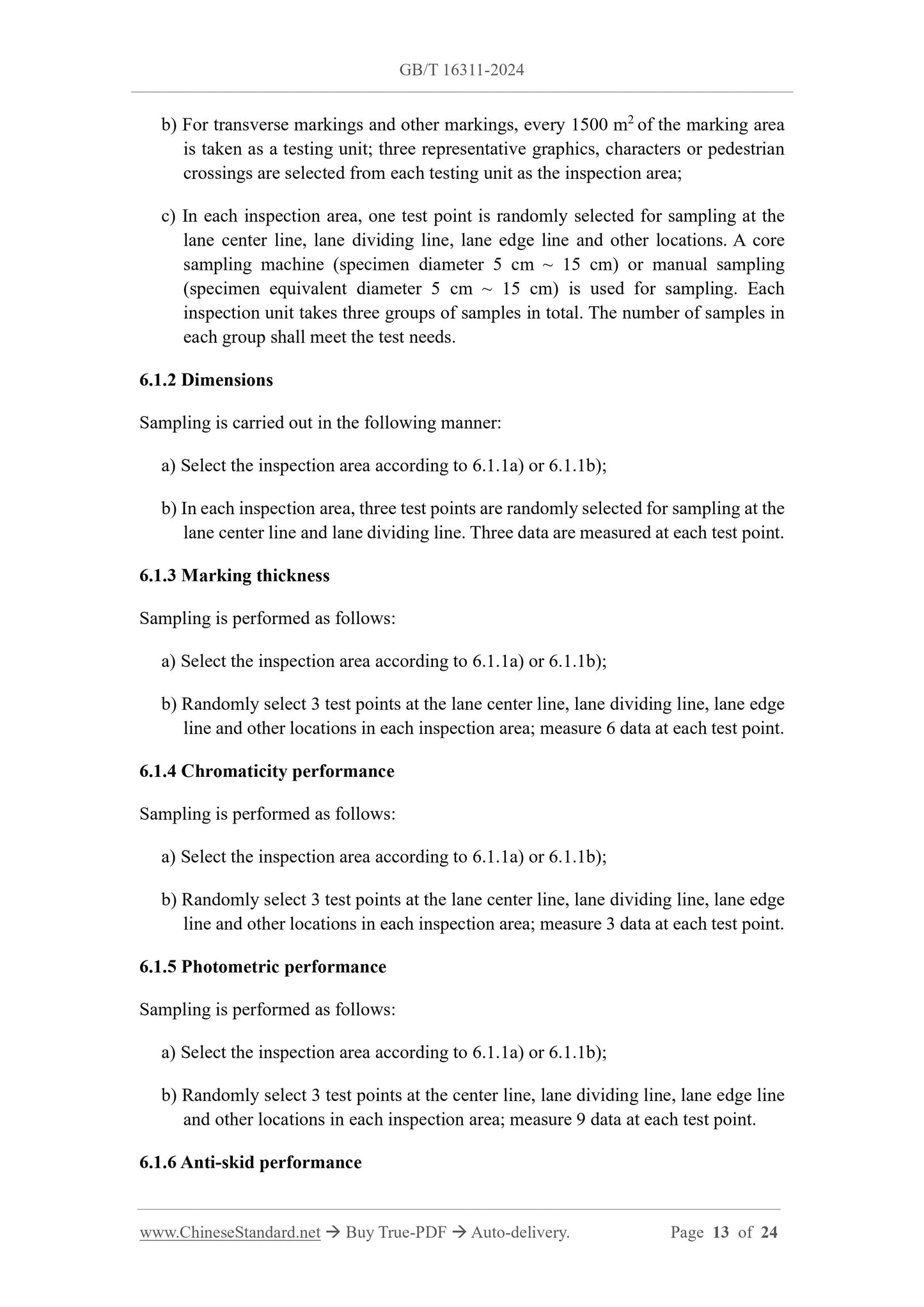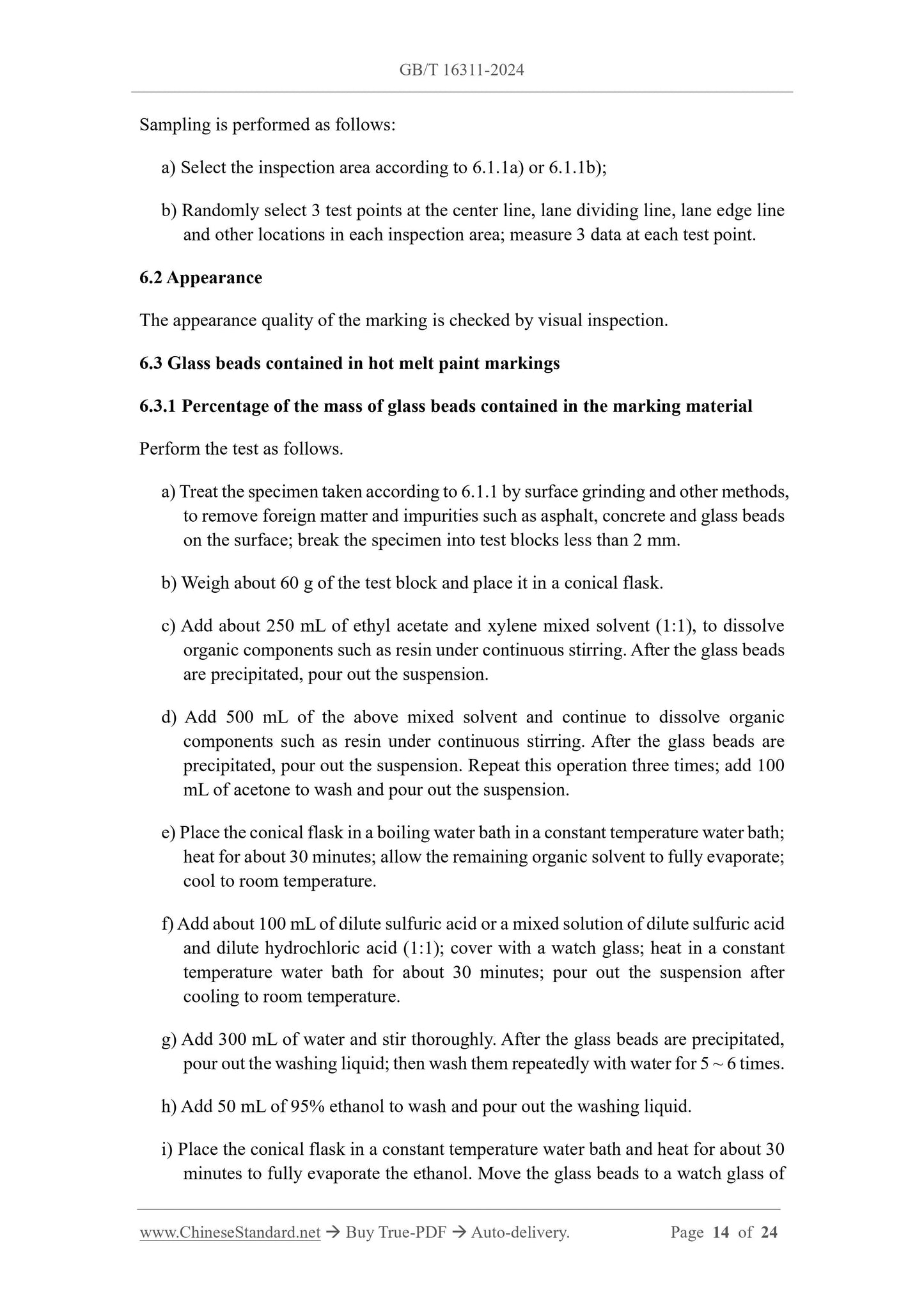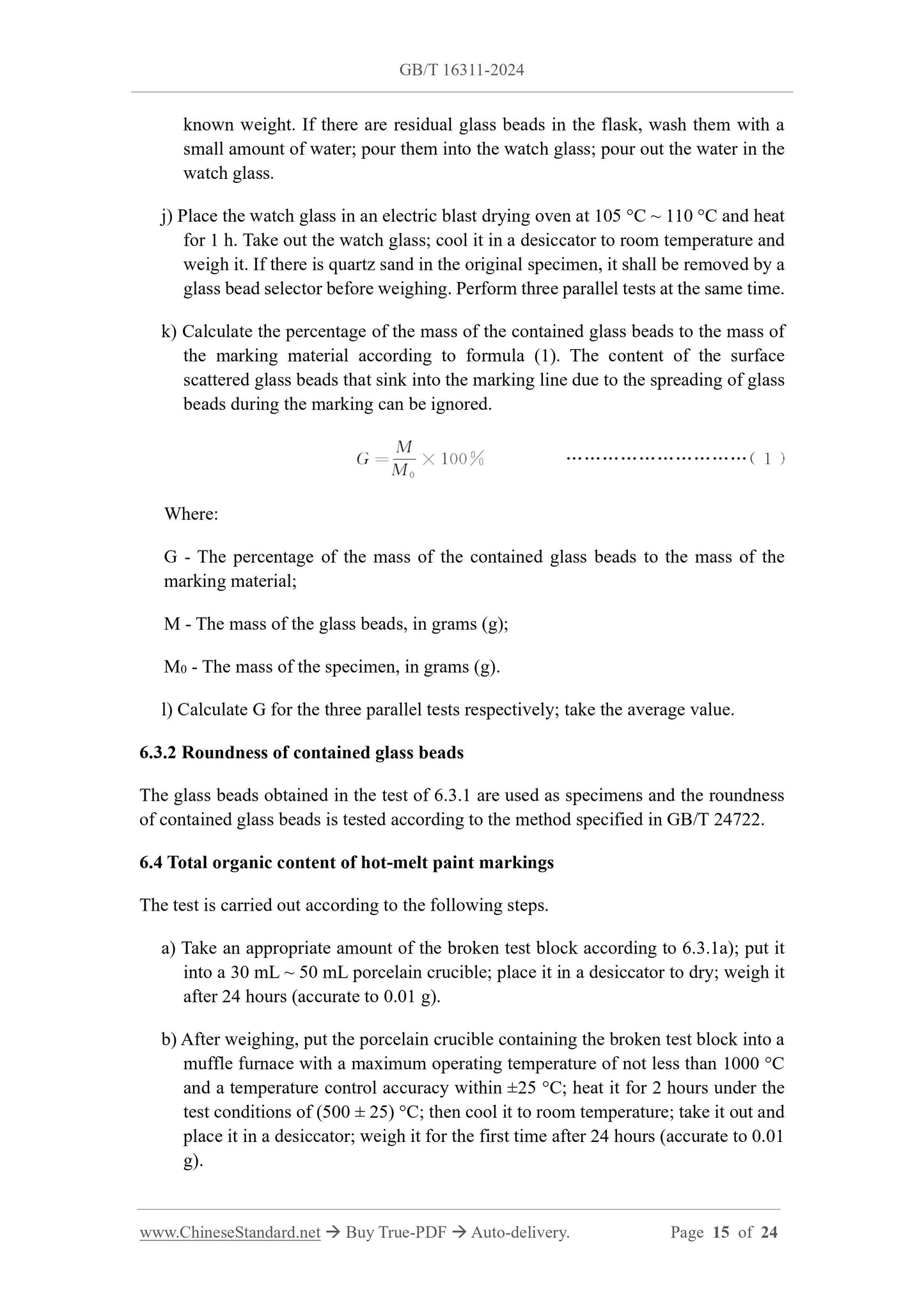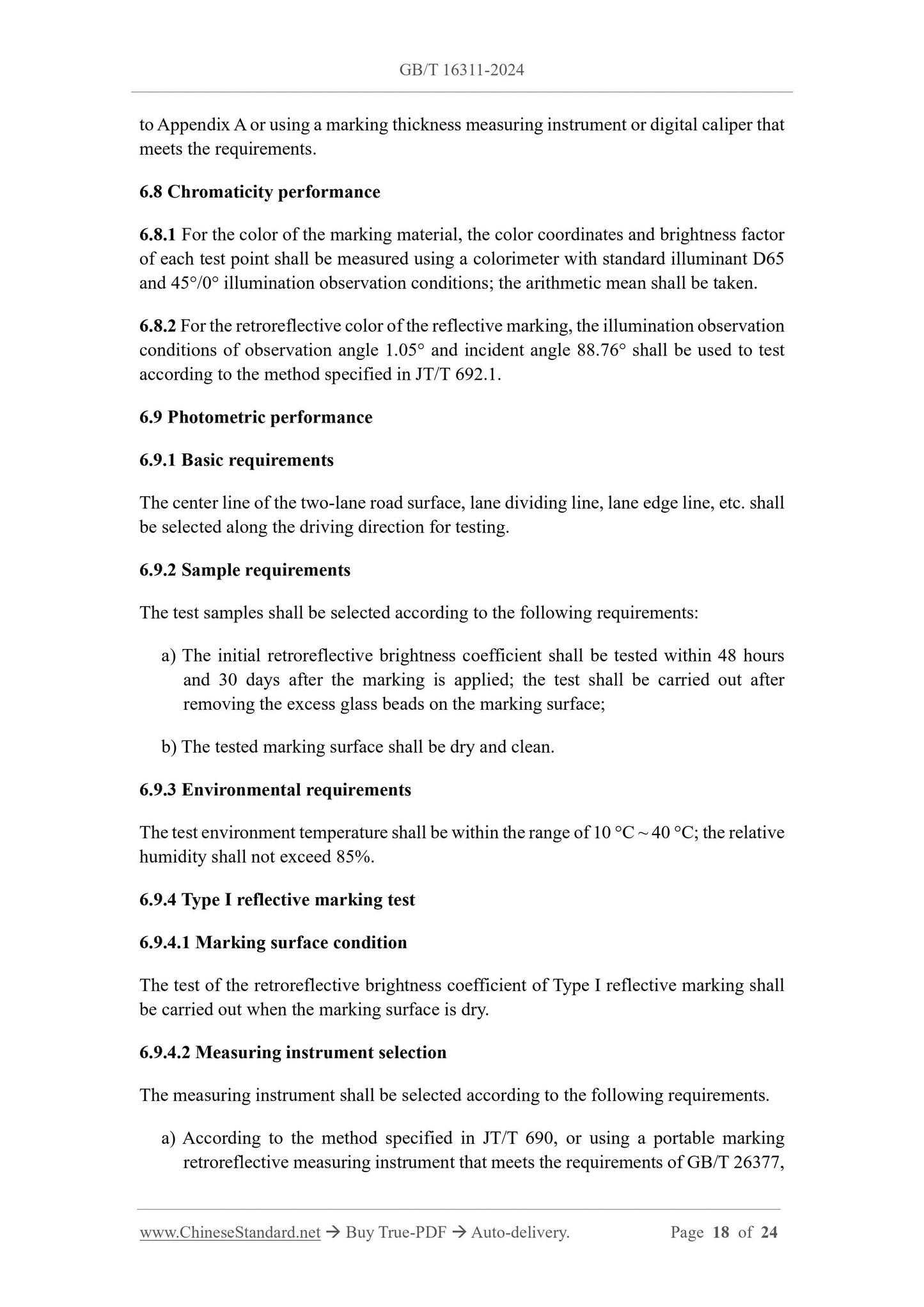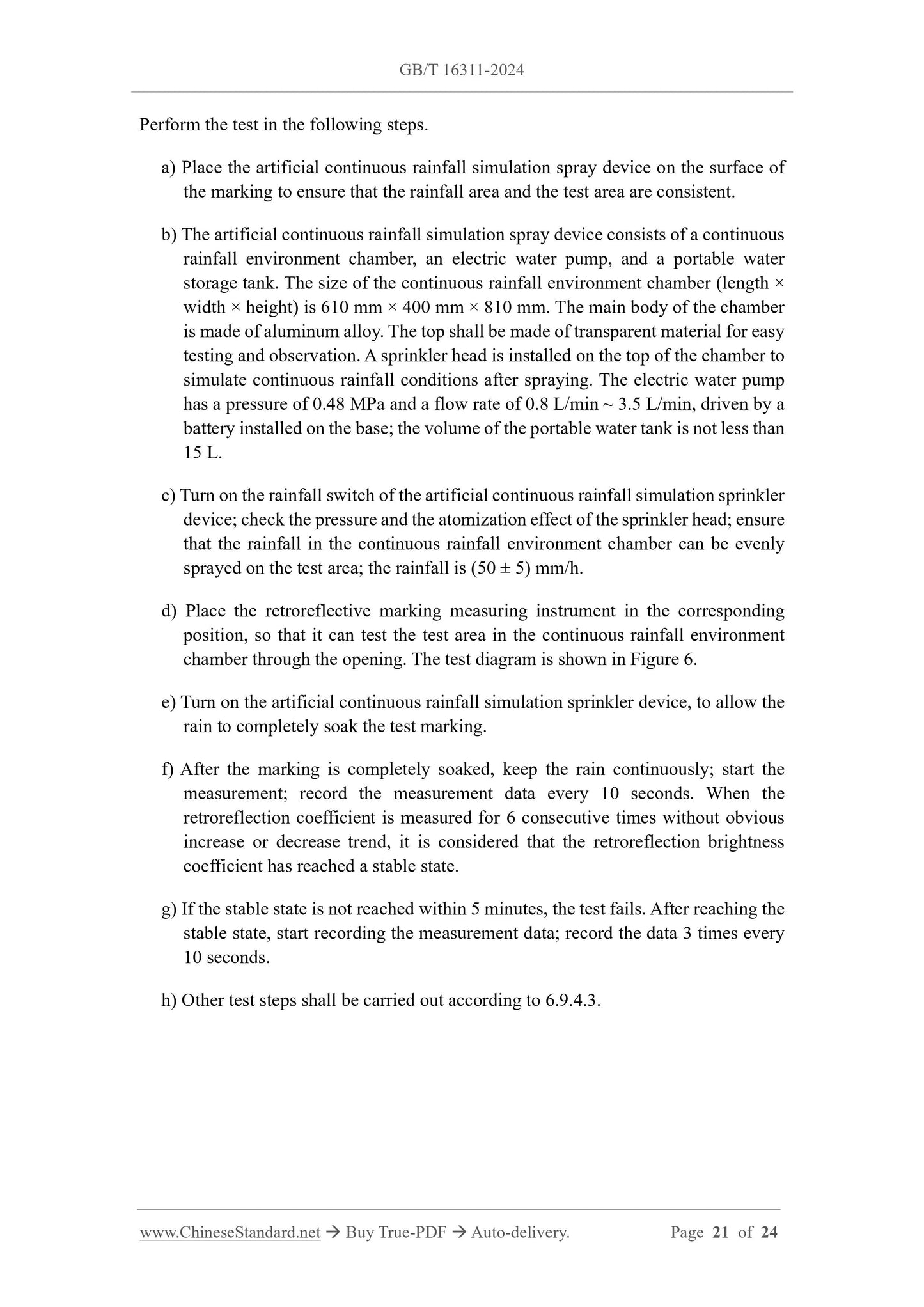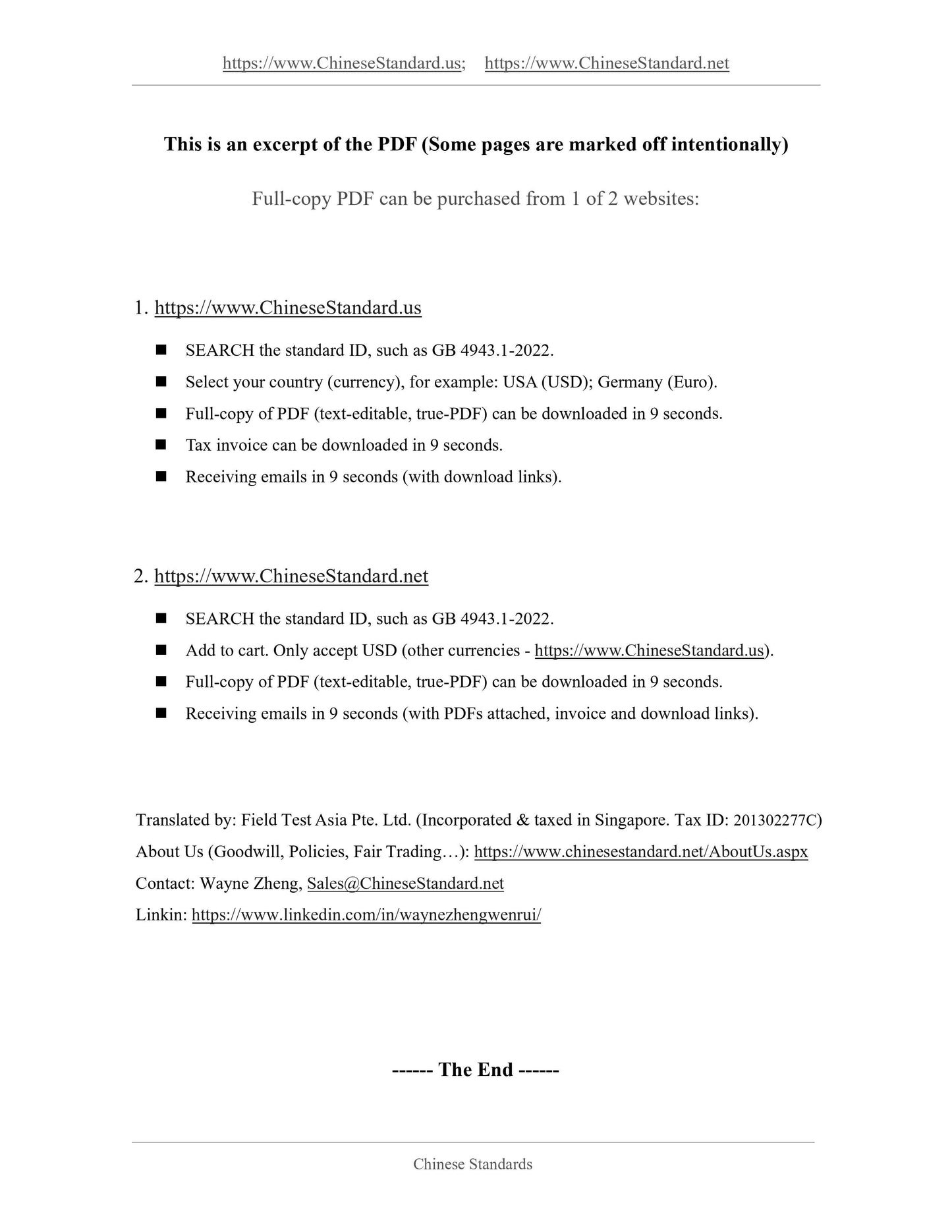1
/
of
9
www.ChineseStandard.us -- Field Test Asia Pte. Ltd.
GB/T 16311-2024 English PDF (GB/T16311-2024)
GB/T 16311-2024 English PDF (GB/T16311-2024)
Regular price
$380.00
Regular price
Sale price
$380.00
Unit price
/
per
Shipping calculated at checkout.
Couldn't load pickup availability
GB/T 16311-2024: Specification and test method for road traffic markings
Delivery: 9 seconds. Download (and Email) true-PDF + Invoice.Get Quotation: Click GB/T 16311-2024 (Self-service in 1-minute)
Newer / historical versions: GB/T 16311-2024
Preview True-PDF
Scope
This document specifies the classification, quality requirements, testing methods ofroad traffic markings.
This document applies to the quality requirements and testing of newly painted traffic
markings on roads.
Basic Data
| Standard ID | GB/T 16311-2024 (GB/T16311-2024) |
| Description (Translated English) | Specification and test method for road traffic markings |
| Sector / Industry | National Standard (Recommended) |
| Classification of Chinese Standard | P51 |
| Word Count Estimation | 24,213 |
| Date of Issue | 2024-08-23 |
| Date of Implementation | 2024-08-23 |
| Issuing agency(ies) | State Administration for Market Regulation, China National Standardization Administration |
Share
